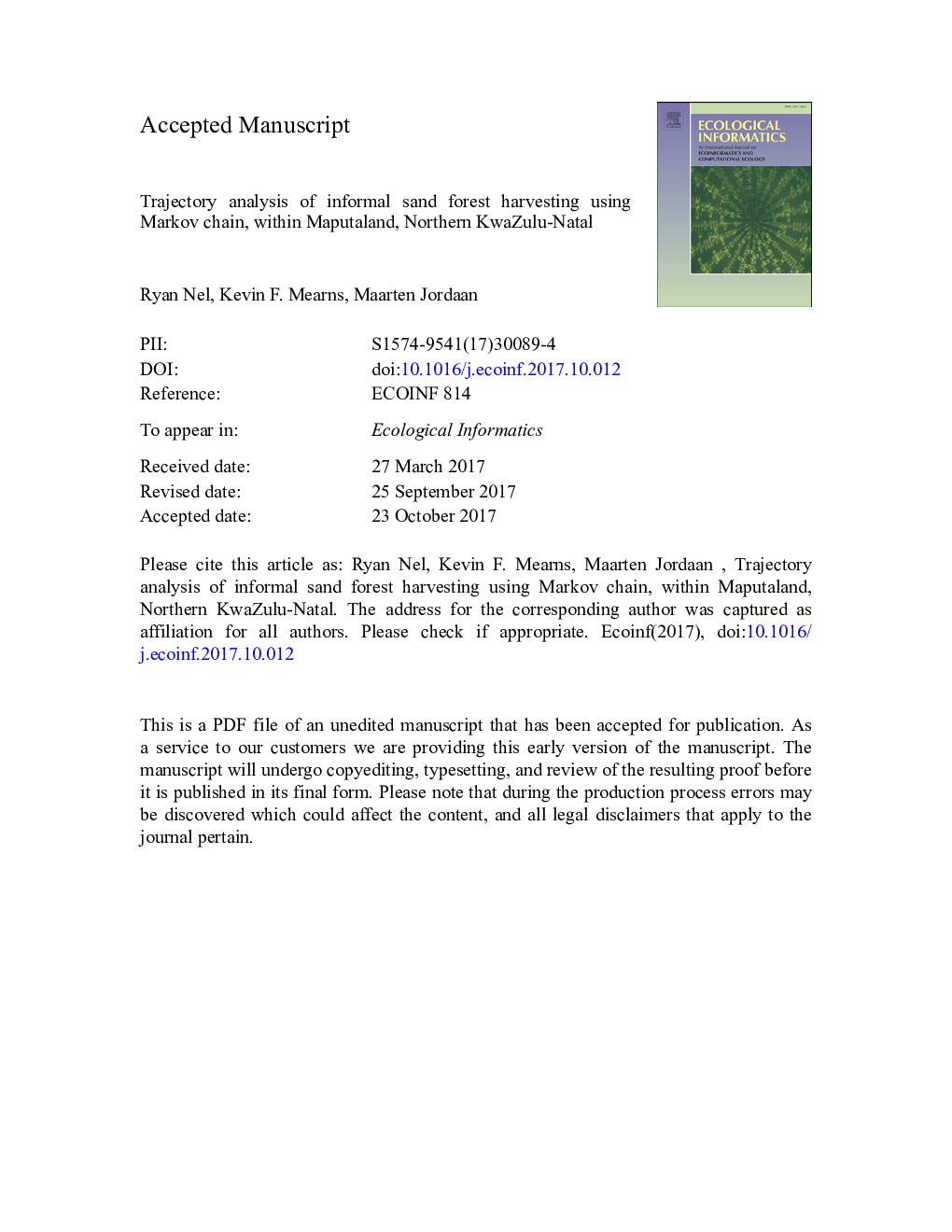| Article ID | Journal | Published Year | Pages | File Type |
|---|---|---|---|---|
| 8845893 | Ecological Informatics | 2017 | 22 Pages |
Abstract
The key objective that is envisaged for this paper is predicting the future changes of Sand Forest that will take place as a result of continued informal wood harvesting. A change prediction model was undertaken through the use of the IDRISI Land Change Modeller, to predict the changes that would occur by 2024 within Sand Forest, over a 10Â year period from 2014 base data available. Using Markov chain, the anticipated loss in extent of Sand Forest that may occur from 2014 to 2024 is 10.51Â km2, over the entire Maputaland. The change prediction model illustrates that the expected loss centres on the larger communities that have established road networks. However, as these resources become depleted, this may change after 2024. The ability of trajectory analysis to predict potential changes based on observed and quantified trends provides a new dynamic to conservation and management strategies. In understanding where and how much Sand Forest will be lost in the forthcoming 10Â years, more appropriate and accurate recommendations on conservation and management can be made. Furthermore, priority areas can be more readily identified for both conservation and for management intervention.
Related Topics
Life Sciences
Agricultural and Biological Sciences
Ecology, Evolution, Behavior and Systematics
Authors
Ryan Nel, Kevin F. Mearns, Maarten Jordaan,
